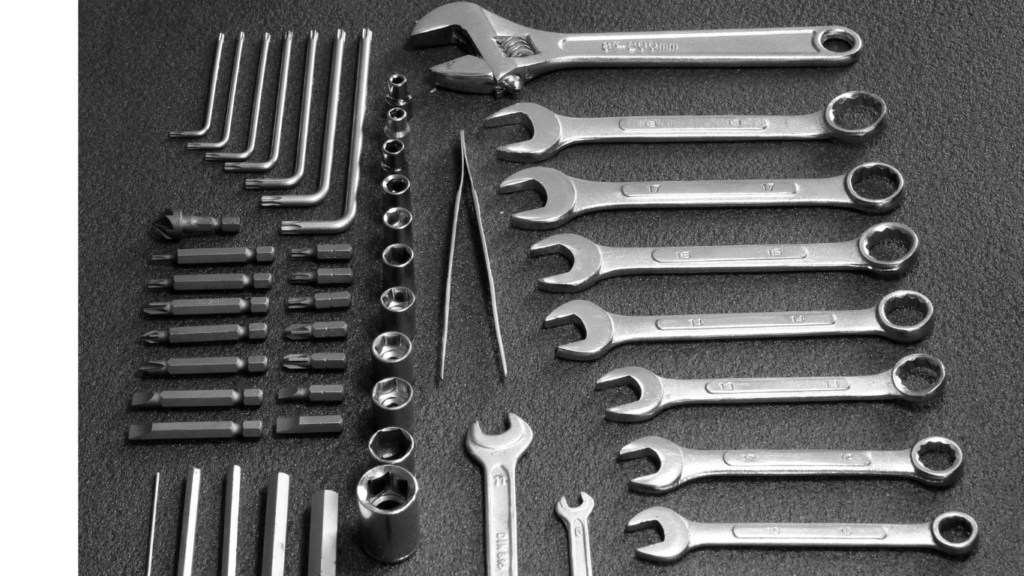Essential Tools for Home Car Maintenance
Having the right tools for home car maintenance is essential for saving money and understanding your vehicle better. Let’s explore the basic and specialty tools you need.
Basic Hand Tools
Basic hand tools include wrenches, screwdrivers, and pliers. These tools come in handy for various tasks. A set of combination wrenches (metric and SAE) handles most bolts.
Screwdrivers should include both flathead and Phillips types. Use pliers, including:
- needle-nose
- locking pliers
for gripping and cutting tasks.
Specialty Tools
Specialty tools go beyond the basics to address specific car maintenance tasks. A torque wrench ensures nuts and bolts are properly tightened to manufacturer specifications.
An OBD-II scanner helps diagnose engine problems by reading error codes. A battery tester checks battery charge and health. These tools streamline complex tasks, making DIY car maintenance more efficient.
Organizing Your Workspace
Creating an efficient workspace is crucial for effective home car maintenance. A well-organized area saves time and minimizes frustration.
Proper Storage Solutions
Use pegboards for tool visibility. Hang frequently used items like:
- wrenches
- screwdrivers
within easy reach. Install shelves to store larger tools and boxes.
Utilize tool chests with labeled drawers to keep smaller tools organized. Magnetic strips can hold metal tools securely and free up space. For consumables, use clear containers for easy identification. Each tool should have a designated spot.
Safety Equipment
Keep essential safety gear accessible. Store safety glasses and gloves in a drawer or on a hook near your workbench. Place a fire extinguisher in a visible, easy-to-reach location.
Have a first aid kit handy with basic medical supplies. Use heavy-duty flooring mats to reduce fatigue and prevent slips. Proper storage for these items ensures you’re prepared for emergencies and reduces the risk of accidents.
Must-Have Mechanical Tools

Every home car maintenance enthusiast needs a robust set of mechanical tools. These tools ensure safety and efficiency during any repair or maintenance job.
Jacks and Jack Stands
A reliable car jack and jack stands are essential for any under-the-car work. A hydraulic floor jack offers better stability and ease of use compared to a scissor jack.
Always use jack stands to support the vehicle after lifting it with the jack. This ensures that the car remains securely elevated, reducing the risk of accidents.
Recommended
- Hydraulic floor jack with a lifting capacity of at least 3 tons.
- Pair of heavy-duty jack stands capable of supporting the same weight.
Wrenches and Sockets
A comprehensive wrench and socket set simplifies numerous repair tasks. A combination wrench set includes both open-end and box-end styles, providing versatility. Socket sets with varying sizes and extensions help reach bolts in tight spaces.
- Metric and SAE combination wrench sets.
- Socket set with deep well, standard sockets, and a ratchet with various extensions.
These tools form the foundation of a well-equipped home car maintenance toolkit.
The Role of Electronic Tools
Electronic tools revolutionize home car maintenance, offering precision and detailed diagnostics that traditional tools can’t match.
Diagnostic Tools
Diagnostic tools, like OBD-II scanners, provide real-time data on your car’s systems. These tools read error codes and interpret what they mean. A quality OBD-II scanner can pinpoint issues from engine trouble to transmission problems.
For instance, if the check engine light appears, connecting the scanner reveals the trouble code, guiding your troubleshooting process efficiently.
Without diagnostic tools, identifying the root cause of issues takes longer and often requires professional assistance.
Battery Maintenance Tools
Battery maintenance tools, including digital multimeters and battery testers, ensure the vehicle’s battery operates correctly. A digital multimeter measures voltage, current, and resistance, which is crucial for diagnosing electrical issues.
A battery tester, on the other hand, assesses the battery’s health, indicating whether replacement is necessary.
For example, a battery tester can quickly determine if a battery fails to hold a charge, hinting at future starting troubles. Keeping these tools at hand minimizes the risk of unexpected battery failures and prolongs the battery’s lifespan.

